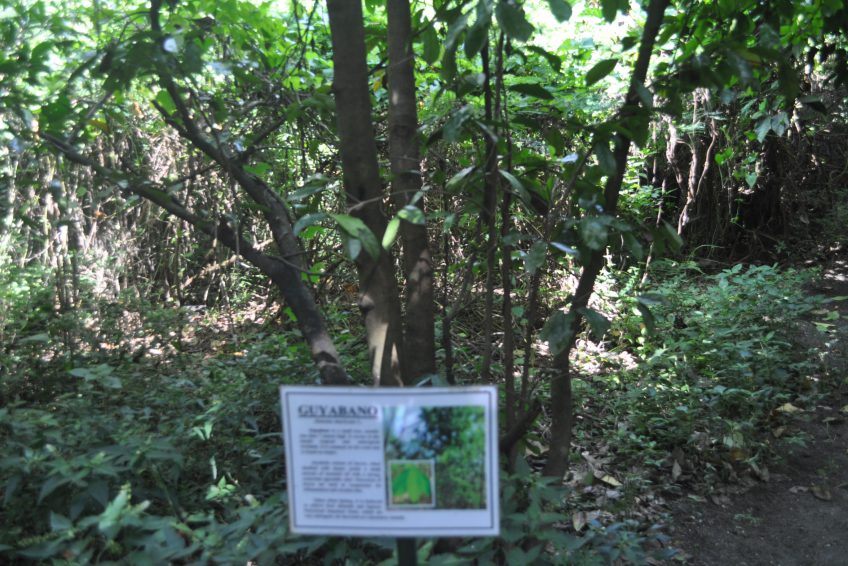
Soursop (also graviola, guyabano, and in Latin America, guanábana) is the fruit of Annona muricata, a broadleaf, flowering, evergreen tree. The exact origin is unknown; it is native to the tropical regions of the Americas and the Caribbean and is widely propagated. It is in the same genus, Annona, as cherimoya and is in the Annonaceae family.
Its young branches are hairy. Leaves are oblong to oval, 8 centimetres (3.1 in) to 16 centimetres (6.3 in) long and 3 centimetres (1.2 in) to 7 centimetres (2.8 in) wide. They are glossy dark green with no hairs above, and paler and minutely hairy to no hairs below. The leaf stalks are 4 millimetres (0.16 in) to 13 millimetres (0.51 in) long and without hairs.
Flower stalks (peduncles) are 2 millimetres (0.079 in) to 5 millimetres (0.20 in) long and woody. They appear opposite from the leaves or as an extra from near the leaf stalk, each with one or two flowers, occasionally a third. Stalks for the individual flowers (pedicels) are stout and woody, minutely hairy to hairless and 15 millimetres (0.59 in) to 20 millimetres (0.79 in) with small bractlets nearer to the base which is densely hairy.
The petals are thick and yellowish. Outer petals meet at the edges without overlapping and are broadly ovate, 2.8 centimetres (1.1 in) to 3.3 centimetres (1.3 in) by 2.1 centimetres (0.83 in) to 2.5 centimetres (0.98 in), tapering to a point with a heart-shaped base. They are evenly thick, and are covered with long, slender, soft hairs externally and matted finely with soft hairs within. Inner petals are oval-shaped and overlap. They measure roughly 2.5 centimetres (0.98 in) to 2.8 centimetres (1.1 in) by 2 centimetres (0.79 in), and are sharply angled and tapering at the base. Margins are comparatively thin, with fine matted soft hairs on both sides. The receptacle is conical and hairy. The stamens are 4.5 millimetres (0.18 in) long and narrowly wedge-shaped. The connective-tip terminate abruptly and anther hollows are unequal. Sepals are quite thick and do not overlap. Carpels are linear and basally growing from one base. The ovaries are covered with dense reddish-brown hairs, 1-ovule, style short and stigma truncate. Its pollen is shed as permanent tetrads.
The fruits are dark green and prickly. They are ovoid and can be up to 30 centimetres (12 in) long, with a moderately firm texture. Their flesh is juicy, acid, whitish and aromatic.
The average weight of 1000 fresh seeds is 470 grams (17 oz) and they have an average oil content of 24%. When dried for 3 days at 60 °C (140 °F), the average seed weight was 322 grams (11.4 oz). They are tolerant of the moisture extraction, showing no problems for long-term storage under reasonable conditions.
The soursop is adapted to areas of high humidity and relatively warm winters; temperatures below 5 °C (41 °F) will cause damage to leaves and small branches, and temperatures below 3 °C (37 °F) can be fatal. The fruit becomes dry and is no longer good for concentrate.
With an aroma similar to pineapple, the flavor of the fruit has been described as a combination of strawberries and apple with sour citrus flavor notes, contrasting with an underlying thick creamy texture reminiscent of banana.
Soursop is widely promoted (sometimes as “graviola”) as an alternative cancer treatment, but there is no medical evidence it is effective for treating cancer or any disease.
















